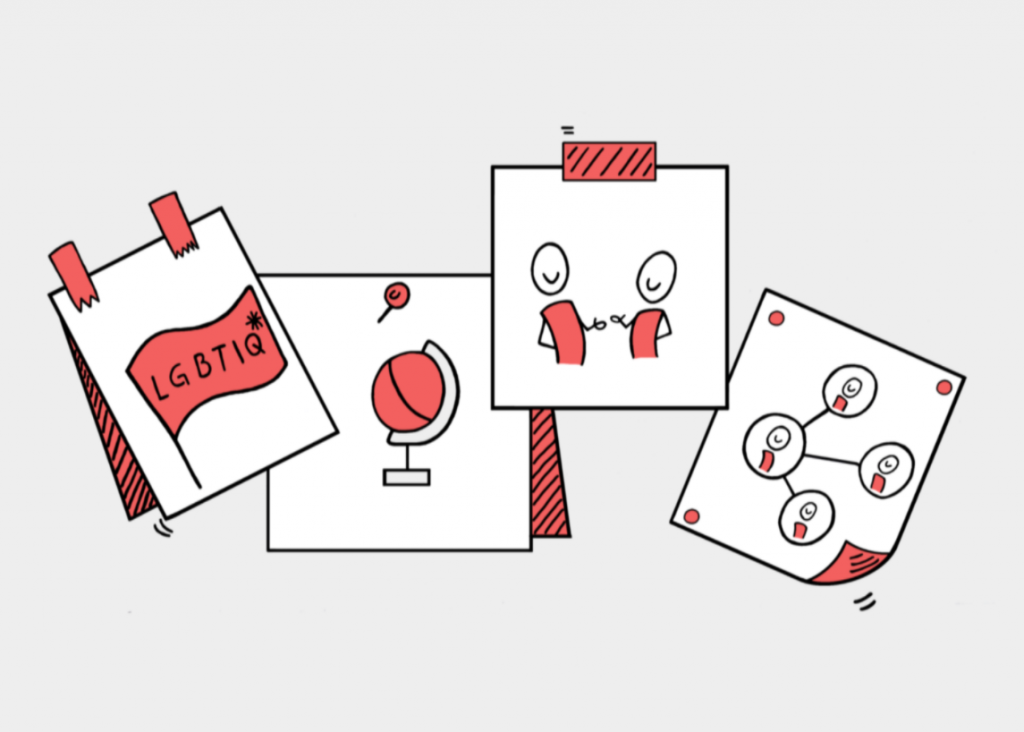By Philipp Schaps
How can we incorporate the basic ideas of equity, diversity, and inclusion in our project work and fill them with life? How can we achieve the desired change as efficiently as possible? How can we take aspects of shared leadership into account?
These were some of the initial questions we asked ourselves in the project team (UE, BFC, and P) during preparation for the D&I project at Forschungszentrum Jülich. These questions quickly led us to the conclusion that, in addition to the required functions of project management, we needed an additional component that would allow us to incorporate a diversity of perspectives and would give voice(s) to the employees.
“In order for everyone at the research center to be involved and contribute to its success, they need an environment that allows them to do so. In addition to scientific equipment and facilities, this also involves an open environment that accepts and supports them. The D&I project’s Sounding Group contributes to this: People from many corners of the research center contribute their expertise – a very motivating task!”
Jens Jäger (Helmholtz Brussels Office, spokesperson for the Sounding Group)
Now, sounding groups or sounding partners are not an invention of the D&I project, but for a D&I project – according to our thesis – they are particularly critical to success for two reasons.
1. Diverse Perspectives
First is the broad and cross-cutting (or intersectional) nature of the topic itself: if we want to promote and value diversity, then we also need diverse perspectives, competencies and experiences in the project. Therefore, we attempted to ensure as much variety as possible in our Sounding Group. Out of the 27 employees in the group, eleven work in a research area, ten in administration or technical infrastructure, and six in various other areas including project sponsors. The members cover different nationalities, age groups, gender identities and hierarchy levels, among other dimensions. Many of them are also active in internal networks or committees outside the project.
“It was a super opportunity to get to know people from sometimes very different backgrounds, who also brought correspondingly different thoughts to the topic of D&I. By participating in the SG, I’ve been able to gain a much better (but certainly not complete!) overall picture of my colleagues, and with that comes more understanding, respect, and openness.”
Caitlin Morgan (Corporate Development, Sounding Group spokesperson)
2. Change Management
Second, the idea of a Sounding Group connected perfectly with the thoughts we had for change management as part of the project. This is important because a D&I project initiates change and transformation at different levels. For example, change theorist John Kotter recommends creating a Guiding Coalition and forming a Volunteer Army for a successful and sustainable change. A convinced coalition and volunteer commitment enable the organization to transform itself. Everett Roger’s innovation curve impressively shows that change is also about bringing along the so-called innovators and early adopters – i.e. people who are open to change and want to help shape it. In our view, the Sounding Group fulfills these important functions for the project, which also offers a variety of opportunities for employee participation.

We also established and specified the functions of the group and its members after consulting with the respective supervisors. The Sounding Group not only provides feedback and contributes topic-specific expertise and impetus, but it also co-develops and tests project products, as well as participating in discussions and networking opportunities. In addition, the members of the group act as multipliers and ambassadors in their own teams and areas.
In the Equal Opportunity Office, we have already had very good experience with the group of Family Ambassadors: a group of committed employees – in a wide variety of positions and life phases – who also act as multipliers and impulse generators on the topic of reconciling work and care work.
“It remains important for many LGBTTIQA+ in all sectors of our society, including significantly the professional sectors, to secure our place by awakening understanding and acceptance. In doing so, we do not want to have more rights than others, but equal rights. A ‘sounding group’ composed as diversely as possible was and is an important means of having our say.”
Zoë Hester (Central Library, Sounding Group Spokesperson)
We are sure that the commitment is worthwhile for both the Sounding Group and Family Ambassadors: Those who get involved can directly and actively help shape the project and therefore its results, embrace opportunities for visibility and networking across FZJ, and learn together with other participants.
In the first year of the project, there were working groups, workshops, and small group formats, as well as open meetings – unfortunately, due to the pandemic, all in virtual space. To ensure respectful and constructive work, the group has adopted rules for collaboration, which include a bilingual approach: Each participant speaks either German or English and makes sure to use expressions that are easy to understand; if necessary, the moderator or other participants translate. Both languages are used in correspondence.

Thanks are due to all 27 participants in the group and also to the supervisors who support and honor this work.

No Comments
Be the first to start a conversation